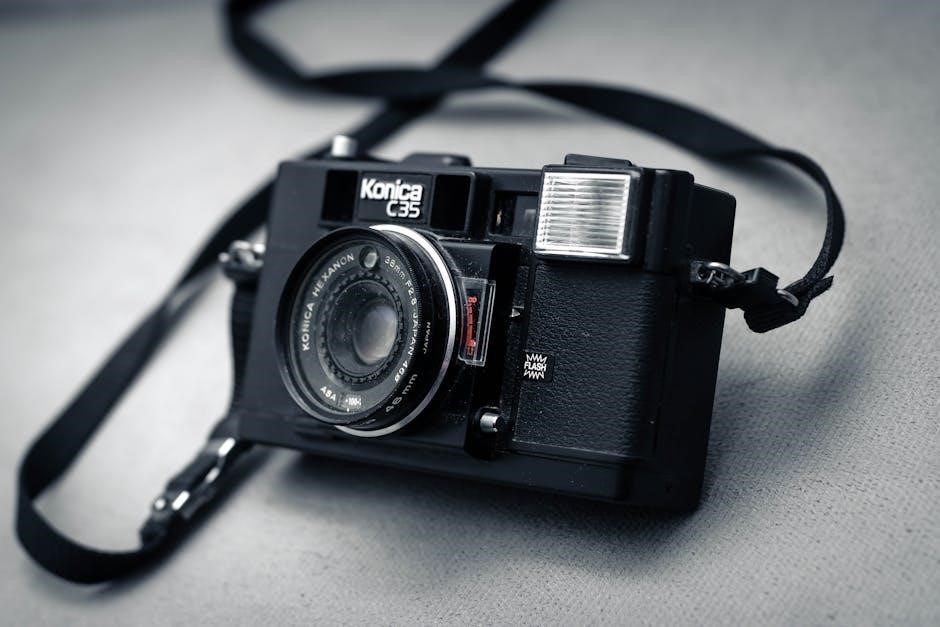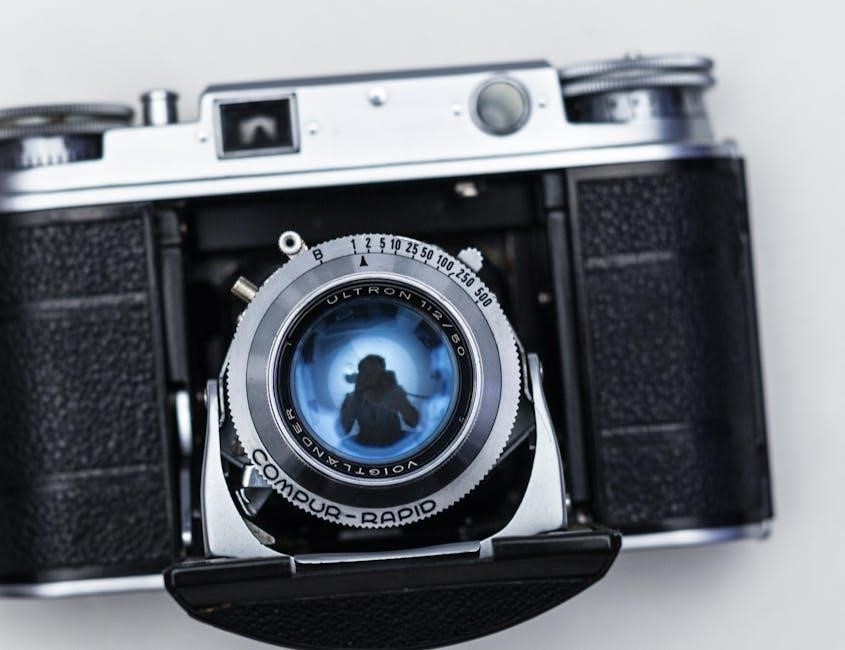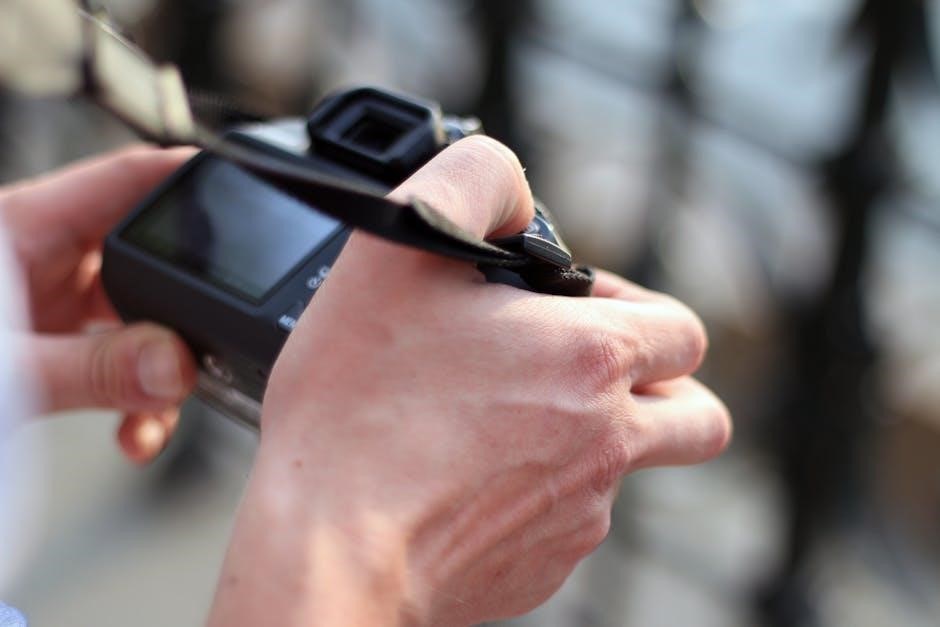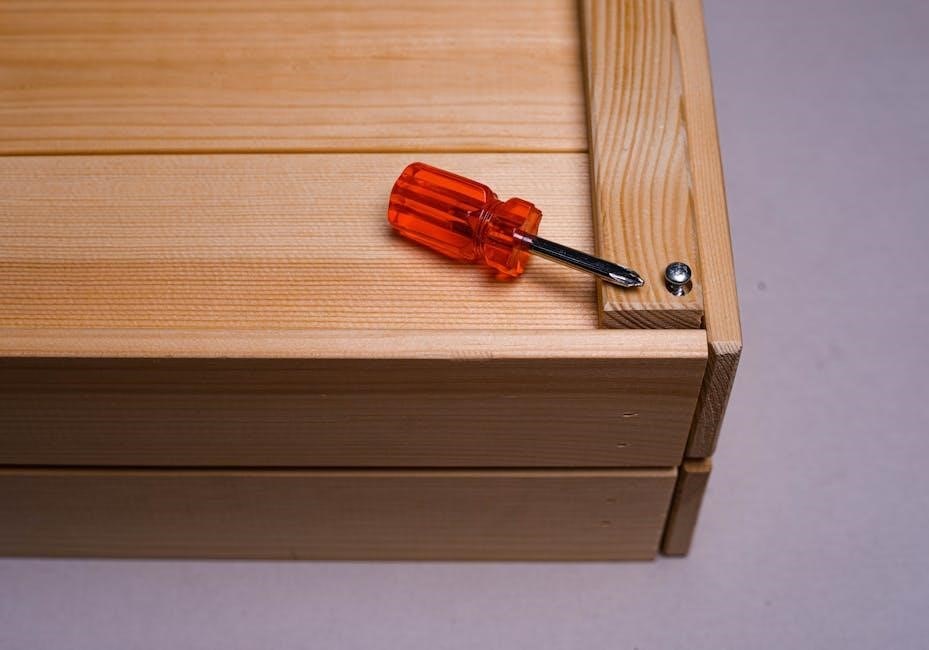Manual roller shutters, while durable, often face issues like sticking, misalignment, or broken components. Regular maintenance is key to preventing major problems and ensuring smooth operation.
1.1. Overview of Manual Roller Shutters
Manual roller shutters are window or door coverings operated by hand, typically using a pulley or winding mechanism. They provide security, insulation, and light control, making them ideal for homes and businesses. Unlike automatic shutters, manual versions rely on physical effort, offering a cost-effective and straightforward solution. Regular maintenance is essential to ensure smooth operation and longevity, addressing common issues before they escalate.
1.2. Importance of Identifying and Addressing Issues
Identifying and addressing issues with manual roller shutters is crucial for maintaining their functionality and longevity. Ignoring problems can lead to more severe damage, safety hazards, and costly repairs. Regular inspections and timely fixes ensure smooth operation, prevent potential risks, and extend the lifespan of the shutters, making them a reliable and durable solution for security and insulation needs.

Sticking or Stuck Roller Shutters
Identifying and addressing issues with manual roller shutters is crucial for maintaining their functionality and longevity. Ignoring problems can lead to more severe damage, safety hazards, and costly repairs. Regular inspections and timely fixes ensure smooth operation, prevent potential risks, and extend the lifespan of the shutters, making them a reliable and durable solution for security and insulation needs.
2.1. Causes of Sticking Issues
Sticking or stuck manual roller shutters often result from dirt buildup, worn-out components, or lack of lubrication. Misaligned tracks or excessive force can also cause friction, leading to operational difficulties. Additionally, harsh weather conditions or poor maintenance may contribute to sticking issues, making it essential to address these factors promptly to ensure smooth functionality.
2.2. How to Fix Stuck Manual Roller Shutters
To fix stuck manual roller shutters, apply a lubricant like WD40 to the tracks and let it soak. Gently operate the shutters to loosen them. Check for broken cables or pulleys and replace them if necessary. Clean debris from the tracks to ensure smooth movement. Regular lubrication and maintenance can prevent future sticking issues and extend the lifespan of your roller shutters.
Roller Shutter Alignment Problems
Alignment issues often stem from dirt buildup, worn components, or poor installation. Misaligned shutters can hinder performance and cause further damage if left unaddressed.
3.1. Top Causes of Misalignment
Dirt and debris accumulation, worn-out components, and poor installation are primary causes of roller shutter misalignment. Harsh weather conditions and manual handling can also contribute to this issue, affecting the shutters’ tracking and overall functionality.
3.2. Consequences of Poor Alignment
Poor alignment can lead to increased wear and tear on components, reduced security, and compromised insulation. Misaligned shutters may also create gaps, allowing light or noise to enter, and can lead to increased maintenance costs over time due to uneven stress on the system.
3.3. Adjusting and Fixing Alignment Issues
To fix alignment problems, inspect and clean the tracks, ensuring they are free from debris. Tighten any loose screws and adjust the shutter slats to align properly. Use a spirit level to ensure the system is balanced. Lubricate moving parts and check the pulley or winding mechanism for proper function. Regular adjustments can prevent future misalignment and ensure smooth operation.

Broken or Damaged Components
Broken cables, straps, or chains can halt operation, while damaged slats compromise security and insulation. These issues often result from wear, accidents, or improper installation, requiring prompt repair or replacement to restore functionality and safety.
4.1. Damaged Slats and Their Impact
Damaged slats can compromise the functionality and security of manual roller shutters. While minor dents may not immediately affect performance, they can lead to further damage over time. Slats that are bent, broken, or misaligned can create gaps, reducing insulation and allowing light or noise to enter. Severe damage may also hinder smooth operation, making it difficult to open or close the shutters properly. Prompt repair or replacement is essential to maintain optimal performance and security.
4.2. Broken Cables, Straps, or Chains
Broken cables, straps, or chains are a common issue in manual roller shutters, often caused by wear and tear or poor installation. When these components fail, the shutters may become stuck or inoperable. Regular inspection is crucial to identify fraying or weakening of these parts before they break completely. Replacing them promptly ensures smooth operation and prevents further damage to the shutter system.
4.3. Repairing or Replacing Damaged Parts
Repairing or replacing damaged parts is essential to restore functionality. Inspect components like slats, cables, and chains for wear. Replace broken parts promptly to prevent further damage. Lubricating moving parts can enhance smooth operation. For complex issues, professional assistance may be necessary to ensure proper repair and maintain optimal performance of the roller shutter system.

Power-Related Issues
Power-related problems, such as motor failure or loss of electricity, can disrupt roller shutter operation. Ensure connections are secure and circuits are functioning properly for smooth performance.
5.1. Loss of Power or Motor Failure
A loss of power or motor failure can halt roller shutter operation. This issue often stems from electrical outages, tripped circuits, or faulty wiring. Additionally, motor overload or worn components can cause failure. Regularly inspecting connections and ensuring proper installation can help prevent such issues, maintaining reliability and performance over time.
5.2. Checking and Restoring Power Connections
To address power-related issues, start by ensuring the power source is switched on and confirming there are no tripped circuits or blown fuses. Check all electrical connections for looseness or damage. If the motor still doesn’t function, inspect the wiring for breaks or corrosion. If problems persist, consult a professional to diagnose and repair complex electrical faults, ensuring safe and reliable operation.
Manual Roller Shutter Specific Problems
Manual roller shutters can experience unique issues such as pulley system wear, broken cables, and sticking, which affect their functionality and require attention.
6.1. Pulley System Wear and Tear
The pulley system in manual roller shutters can wear out over time, causing operational issues. Friction and lack of lubrication often lead to sticking or difficulty in moving the shutters. Regular inspection and maintenance are essential to prevent pulley system failure. Lubricating moving parts and replacing worn components can extend the lifespan and ensure smooth operation of the shutters.
6.2. Winding Mechanism Malfunctions
Winding mechanism malfunctions are common in manual roller shutters, often due to overuse or improper handling. Issues like jammed springs or broken gears can prevent the shutters from rolling up smoothly. Regular lubrication and inspection help prevent such problems. Addressing these malfunctions promptly ensures the shutters function correctly and reduces the risk of further damage to the system.

Dirt and Debris Buildup
Dirt and debris accumulation is a common issue, affecting roller shutter performance. Regular cleaning of tracks and slats ensures smooth operation and prevents jams or sticking issues.
7.1. How Dirt Affects Roller Shutter Performance
Dirt and debris can significantly impair roller shutter functionality. When grime accumulates on tracks or slats, it causes friction, leading to sticking or jamming issues. Over time, this buildup can wear down mechanical components, such as pulleys and cables, causing operational inefficiency. Additionally, dirt may obstruct motorized systems, resulting in incomplete opening or closing cycles. Regular cleansing is essential to maintain optimal performance and longevity.
7.2. Cleaning and Maintenance Tips
Regular cleaning prevents dirt buildup on roller shutters. Use a soft cloth and mild detergent to wipe slats and tracks. Lubricate moving parts with silicone spray to reduce friction. Inspect cables and pulleys for wear and replace if necessary. Schedule monthly maintenance to ensure smooth operation and extend the lifespan of your roller shutters.

Overheating Issues
Overheating often occurs in electric roller shutters, particularly in motors. This can cause operational failure, requiring immediate attention to prevent further damage and ensure safety.
8.1. Causes of Motor Overheating
Motor overheating in electric roller shutters is often caused by excessive use, blocked air vents, or internal component failures. Dust accumulation and misalignment can also strain the motor, leading to temperature spikes. Additionally, faulty sensors or prolonged operation without breaks can contribute to overheating issues, which if ignored, may result in permanent damage to the motor.
8.2. Solutions to Prevent Overheating
To prevent motor overheating, ensure proper ventilation around the shutter system and clean dust from vents. Regularly inspect and maintain sensors and electrical connections. Avoid continuous operation without breaks and address misalignment issues promptly. Lubricate moving parts and ensure all components are in good working condition. Scheduling professional maintenance can also help identify potential overheating risks before they escalate.

Preventive Maintenance
Regular inspection of slats, pulleys, and cables helps identify wear and tear early. Lubricating moving parts and cleaning debris ensures smooth operation and extends lifespan.
9.1. Regular Checks and Lubrication
Implementing regular inspections ensures the longevity of manual roller shutters. Lubricate pulleys and hinges periodically to reduce friction and prevent sticking. Clean debris from tracks to maintain smooth movement. Check cables for wear and tear, and replace them if damaged. These simple steps can prevent major issues and keep your shutters functioning efficiently year-round.
9.2. Importance of Scheduled Maintenance
Scheduled maintenance is crucial for optimal performance of manual roller shutters. Regular upkeep prevents issues like jamming and wear, ensuring security and energy efficiency. Addressing minor problems early avoids costly repairs and extends lifespan, maintaining functionality and aesthetic appeal over time.

Troubleshooting Common Problems
Identify the root cause of issues like stuck parts or misalignment. Start with simple fixes like cleaning or lubricating before moving to more complex repairs or replacements.
10.1. Identifying the Root Cause of Issues
Identifying the root cause of manual roller shutter problems is crucial for effective troubleshooting. Common culprits include dirt buildup, worn components, misaligned tracks, or broken cables. Start by visually inspecting the shutter’s mechanism and checking for obstructions. Lubrication issues or loose fasteners may also contribute to sticking or jamming. Addressing the source ensures long-lasting solutions.
10.2. DIY Fixes for Manual Roller Shutters
For stuck manual roller shutters, apply lubricant like WD40 to the rails and let it sit before operating. Clean debris from tracks and inspect for misalignment. Check cables or straps for wear and tighten loose screws. Replace damaged slats or components if necessary. Regular maintenance, including lubrication and cleaning, can prevent major issues and keep your shutters functioning smoothly.

Professional Repair and Service
Professional repair services are essential for complex issues like motor failures or severe damage. Experts ensure smooth operation, security, and longevity of your manual roller shutters.
11.1. When to Call a Professional
Call a professional when issues like severe motor damage, broken cables, or significant slat damage arise. Complex problems require expertise to prevent further damage and ensure safety. DIY fixes may not suffice for major mechanical failures, risking security and functionality. Professionals have the tools and knowledge for effective, long-lasting repairs, saving time and stress.
11.2. Benefits of Expert Maintenance
Expert maintenance ensures optimal performance and longevity of roller shutters. Professionals identify and address issues early, preventing costly repairs. Regular servicing enhances security, energy efficiency, and functionality. Trained technicians use specialized tools and techniques, guaranteeing reliable operation and extending the lifespan of components. Their expertise also provides peace of mind, knowing your shutters are in top condition year-round.
12.1. Summary of Key Points
Common manual roller shutter problems include sticking, misalignment, broken components, and power issues. Regular maintenance, prompt repairs, and professional assistance when needed are essential for optimal functionality. Addressing issues early prevents escalation, ensuring security and efficiency. Proactive care extends lifespan and performance, making manual roller shutters a reliable choice for homes and businesses.
12.2. Final Tips for Maintaining Manual Roller Shutters
- Regularly clean tracks and slats to prevent dirt buildup.
- Lubricate moving parts to ensure smooth operation.
- Inspect cables, straps, and pulleys for wear and tear.
- Adjust alignment periodically to maintain proper function.
- Address minor issues promptly to avoid major repairs.
- Schedule professional inspections for optimal performance.




About the author